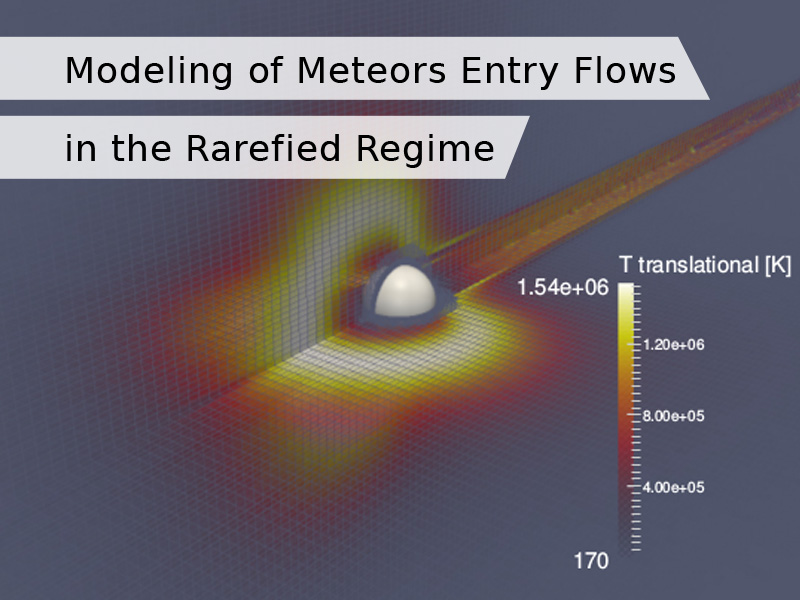thursday 4 Maggio 2017Dalle 12:00Modeling of meteors entry flows in the rarefied regime

Event Details
Federico Bariselli Artificial space systems are
Leggi tutto
Event Details
Federico Bariselli
Artificial space systems are not the only objects flying in our sky.
About 50 tonnes of small meteoroids enter the terrestrial atmosphere every day. These bodies, from one meter diameter to micron-size grains, originate either from sublimating comets or from asteroids. In their rush to the ground, they intersect the atmosphere at velocities up to 72 km/s. As a meteoroid interacts with the atmosphere, its surface temperature can reach several thousands of Kelvins causing its ablation, i.e. melting and evaporation.
Due to their small size and tremendous speeds, meteors often burn up at high altitudes, above 80 km, where the atmosphere is rarefied. Here, the gas cannot be treated as a continuous medium and the Navier-Stokes equations employed in Gas Dynamics fail. Moreover, due to the high energies involved, coupled physico-chemical phenomena (strong departure from thermo-chemical equilibrium, radiative heating, ionization and complex gas-surface interactions) occur both in gas and solid phases, making the prediction of these flows an extremely challenging task.
Recent efforts have been made by the Belgian Institute for Space Aeronomy to predict velocity, trajectory and mass of meteors. The Belgian RAdio Meteor Stations (BRAMS) experiment consists in a series of receivers spread all over Belgium to collect and standardize the meteor observations. Ground radio stations are able to detect the free electron concentration in the wake, which is directly influenced by ablation mechanisms. However, the interpretation of radio data currently relies on phenomenological methods, hence, poorly account for melting and evaporation of the material, chemistry in the meteor trail, and rarefied gas effects.
In this research, we are focusing on developing comprehensive models for the description of the meteor phenomenon in the rarefied regime.
In the first part of the seminar, an evaporation boundary condition, developed in the framework of the Direct Simulation Monte Carlo method, will be introduced. The material is composed by a mixture of metal oxides typically present in ordinary chondritic meteorites. Preliminary results show the formation of the trail and the shielding/condensation effects of the ablated vapors for meteoroids flying at altitudes of 130 and 90 km.
In the second part of the talk, the ionized trail will be discussed following an approach which introduces a posteriori an arbitrarily complex chemistry into the model, as well as internal nonequilibrium. First, this technique is applied to the study of thermochemical relaxation past a 1D shock and to hypersonic argon flows over a cylinder at various degrees of rarefaction. Finally, the recombination of free electrons in the trail is assessed.
DAER website: http://www.aero.polimi.it
Date e orari
giovedì 4 Maggio 2017
Dalle 12:00
Luogo
Politecnico di Milano - Sala Consiglio, DAER, 2nd Floor, Building B12
Via La Masa, 34 - 20156 Milano
Organizzatore
Politecnico di Milano